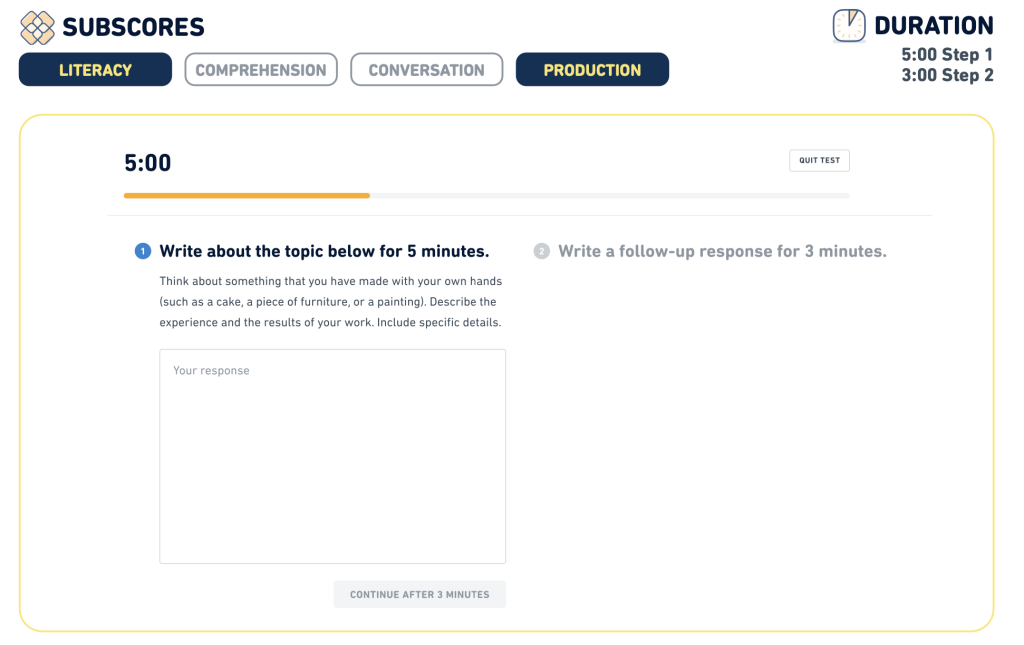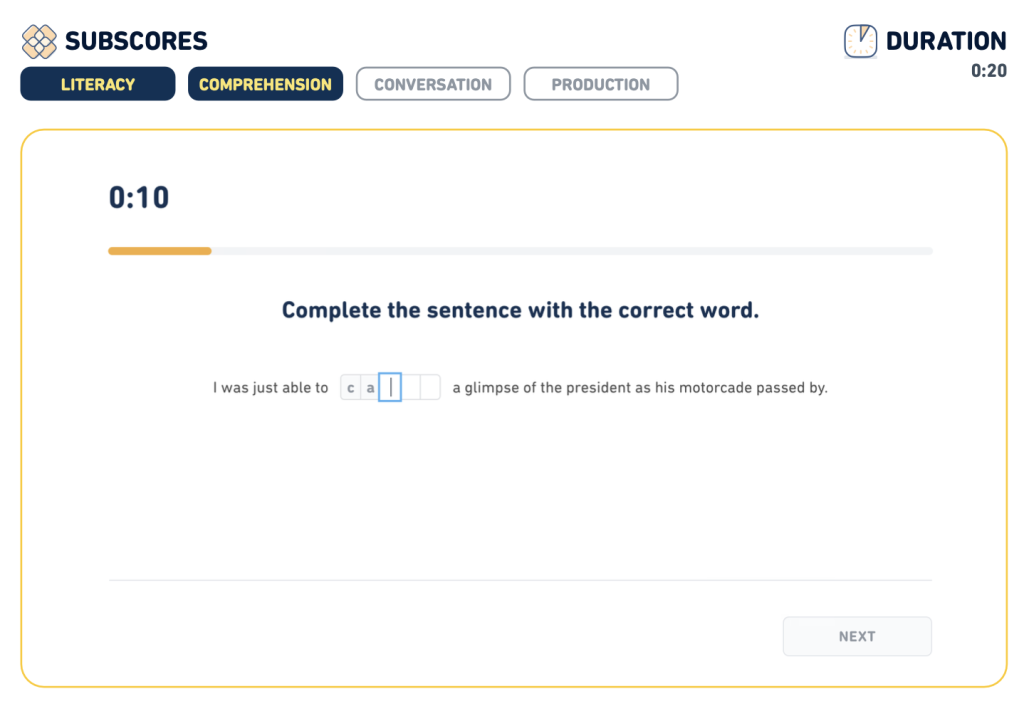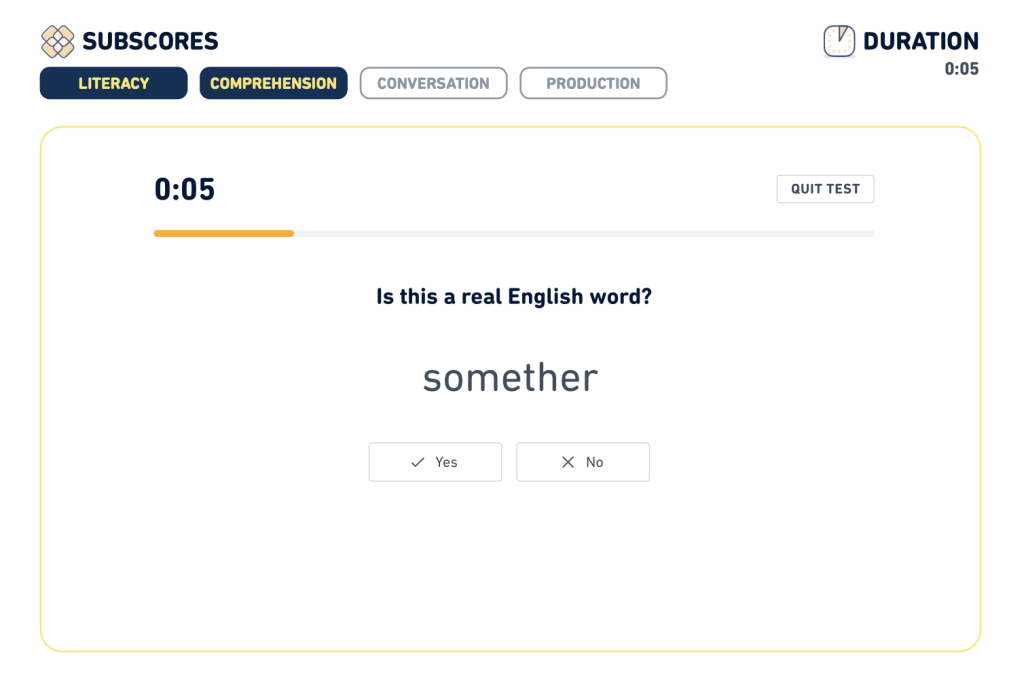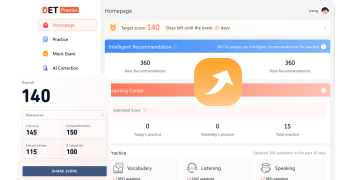Mastering the New Duolingo English Test Updates in 2024: Tips and Strategies
Attention, DET learners! Starting April 2, 2024, the Duolingo English Test (DET) is rolling out innovative updates that are set to enhance your test-taking journey. With the addition of the Interactive Writing component, a newly designed Fill in the Blanks question, and a revamped Read and Select format, it’s time to gear up and align your preparation with these new challenges.
Interactive Writing Component: A Two-Pronged Approach to Writing

The newly introduced Interactive Writing section now requires you to engage with two prompts, sharpening both your creativity and adaptability. In the first five minutes, you’ll draft a response to the primary prompt. Then, a follow-up prompt will test your ability to think on your feet with a three-minute writing task, directly connected to your initial response. To ace this, practice brainstorming and quick outlining. Embrace the art of drafting concise, focused responses and then expanding on them with relevancy and clarity.
Strategies
l Comprehend the Prompt:
Take your time to thoroughly read the prompt. It’s crucial to understand every aspect of the question, as any misinterpretation can result in lost points. Look for important keywords that indicate what is being asked. If the prompt has multiple components, make sure your response addresses each one to demonstrate your comprehension and analytical skills.
l Organize Your Thoughts:
Before you begin writing, spend around 30 seconds brainstorm and outline your ideas. This short planning period helps clarify your main points and the way you want to present them. A well-structured response enhances coherence and ensures you stay on topic. A clear format makes it easier for evaluators to follow your reasoning, which can positively impact your score.
l Review Your Response:
After finishing your writing, be sure to set aside time for proofreading. This important step is often neglected but can significantly enhance your score. Look for spelling mistakes, grammatical errors, and missing words. Fixing these obvious issues shows strong language proficiency and improves the overall quality of your writing. Even a few moments for review can lead to significant improvements.
l Engage in Regular Practice:
Familiarizing yourself with the test format and time limits is essential for success. Consistent practice through mock exams and sample questions can help refine your writing skills and boost your confidence. Aim to simulate test conditions during your practice sessions so you can become comfortable managing your time effectively. The more you practice, the more self-assured you’ll feel on test day, resulting in better performance.
Fill in the Blanks: Contextual Vocabulary in the Spotlight

Fill in the Blanks is not just about knowing words but understanding their application in context. With only 20 seconds per question, it’s a true test of your quick reading and comprehension skills. To excel here, immerse yourself in diverse reading materials and engage in targeted vocabulary exercises that challenge you to fill in missing words in sentences.
Strategies
l Take the time to read the entire sentence carefully: This question type evaluates both the depth and breadth of your vocabulary. To identify the missing word, you need to grasp the context provided by the other parts of the sentence. You might find it helpful to read the sentence multiple times, at different speeds, until you pinpoint the missing word.
l Double-check your answer: Make sure you’ve entered the letters you intended to input.
l Be aware of the grading criteria: For the 'Fill in the Blanks' and 'Read and Complete' questions, only American spelling is accepted. For all other questions, both American and British spellings are allowed.
Read and Select: Precision in Vocabulary

The Read and Select questions now present one word at a time, demanding decisive and swift recognition of real English words. This tests not just your vocabulary breadth but also your attentiveness to detail. Enhance your skills for this section by regularly testing yourself with word recognition exercises and expanding your reading to include a variety of genres.
Strategies
l Quick Overview: Skim through all the options swiftly within the time limit to gain a general sense of the words.
l Check the Spelling: Carefully examine the spelling of the remaining choices to ensure they are proper English words.
l Watch for Spelling Traps: Sometimes, incorrect options are intentionally crafted to closely mimic the correct word, so it's essential to pay attention to the differences.
l Broaden Your Vocabulary: Make it a habit to read more frequently to enrich your vocabulary, which will help you recognize words more quickly during exams.
Conclusion
Embrace these changes as opportunities to demonstrate the depth of your English proficiency. Your adaptability and preparedness for these new question types will reflect your true linguistic capabilities. Remember, regular practice, a calm mind, and a strategic approach are your best allies in conquering the DET.
Utilize these insights and tips to refine your test strategies and practice regimens. By doing so, you’ll not only be prepared for the DET’s updated format but also set up for success in your English language journey.
Further Reading:
https://www.detpractice.com/det-question-type-interactive-writing
https://www.detpractice.com/det-question-type-fill-in-the-blanks
https://www.detpractice.com/det-question-type-read-and-select






